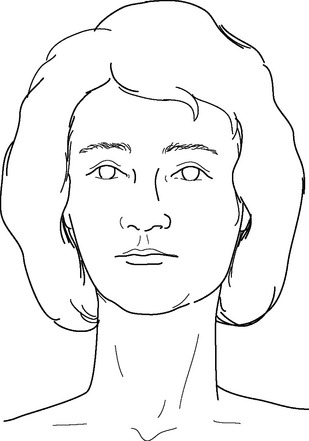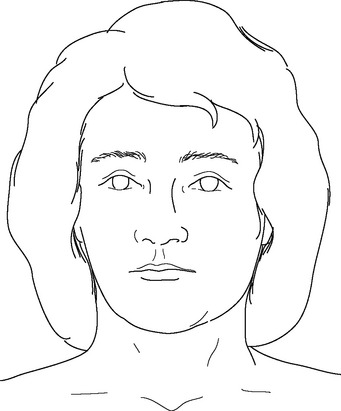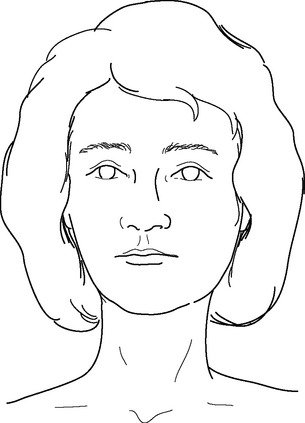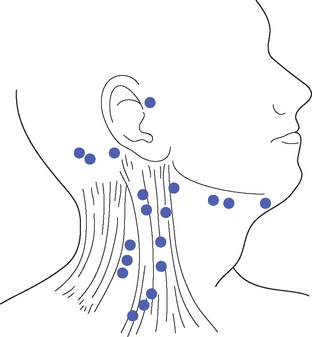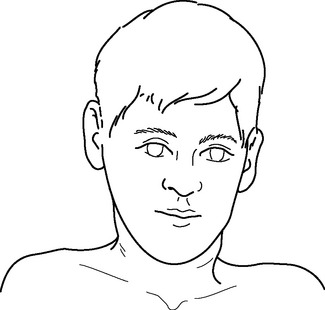 OBSERVATION OF THE THROAT AND NECK
OBSERVATION OF THE THROAT AND NECK
CHANNELS INFLUENCING THE THROAT AND NECK
The pathways of the channels flowing through the neck are illustrated in Figure 10.1 and summarized in Box 10.1.
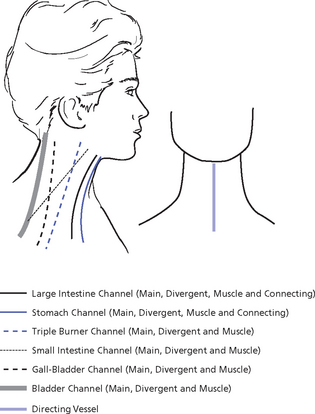
Fig. 10.1 Channels flowing through the neck
The symptoms and signs related to throat and neck are discussed in Chapters 59 and 62 respectively in Part 5.
THROAT
Redness on the throat
Symptoms and Signs, Chapter 59
By ‘throat’ here is meant not the inside of the throat (pharynx) but a redness on the skin outside.
Goitre
Interrogation, Chapter 36; Symptoms and Signs, Chapter 59
The most common cause of goitre is Liver-Qi stagnation with Phlegm, usually occurring against a background of Spleen-Qi deficiency. It may also be caused by Phlegm and Blood stasis, Liver-Fire blazing with Phlegm or Heart- and Liver-Yin deficiency with Phlegm (Fig. 10.2).
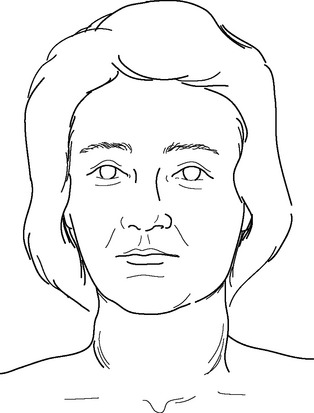
Fig. 10.2 Goitre
Observation of the pharynx
Symptoms and Signs, Chapter 59
To observe the pharynx, ask the patient to open the mouth; press the tongue down firmly with a disposable tongue blade, far enough back to get a good view of the pharynx but not so far as to cause gagging. Simultaneously ask the patient to say ‘ah’ or to yawn. Inspect the palate, the tonsils and the pharynx at this time (Fig. 10.3).
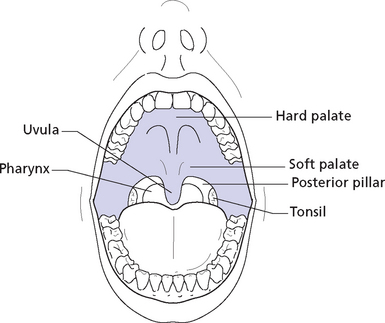
Fig. 10.3 Pharynx
If the pharynx is deep red on observation, it indicates Full-Heat, which may be exterior or interior. The inside of the throat may become red in acute invasions of Wind-Heat affecting the Lung channel and this is especially common in children. In interior conditions, a redness of the inside of the throat may be due to Full-Heat in the Lungs or Stomach and Intestines, the latter being more common in children. If the inside of the throat is pale red, this indicates Empty Heat affecting the Lung or Kidney channel, or both.
Box 10.2 summarizes these pharynx signs.
Abnormal tonsils colour
Red and swollen tonsils
Symptoms and Signs, Chapter 59
Red and swollen tonsils indicate Heat or Toxic Heat often in the Stomach or Large Intestine channel, or both. The tonsils should always be inspected in acute invasions of Wind-Heat, particularly in children. Red and swollen tonsils are frequently seen in children during acute upper respiratory infections. During acute invasions of Wind-Heat, a swelling and redness of the tonsils indicate a more severe degree of Wind-Heat and often the presence of Toxic Heat; they also point to an involvement of the Stomach or Large Intestine channel, or both, and tell us that the child has probably a pre-existing condition of Heat, often Stomach-Heat.
NECK
Neck length
Rigidity of the neck
Symptoms and Signs, Chapter 62
This term refers not to the patient’s subjective sensation but rather to a neck that looks rigid on observation and feels hard on palpation. Rigidity of the neck may be due to Cold in the channels as it occurs in Painful Obstruction Syndrome. It may also be due to a Liver pattern and especially Liver-Qi stagnation, Liver-Yang rising or Liver-Wind.
Deviated neck
Symptoms and Signs, Chapter 62
A deviated neck (leaning to one side) is due either to a weak hereditary Kidney constitution or to severe stagnation of Liver-Qi (Fig. 10.6).

Fig. 10.6 Deviated neck
Neck width
Wide neck
Symptoms and Signs, Chapter 62
A wide neck may indicate Qi stagnation with Phlegm, Phlegm with Blood stasis, or Liver-Fire (Fig. 10.7).
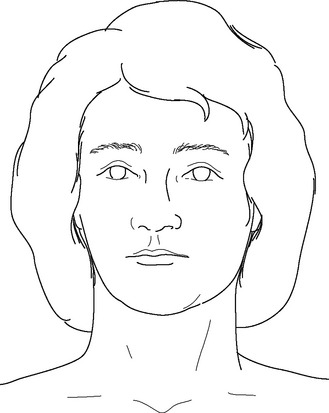
Fig. 10.7 Wide neck

